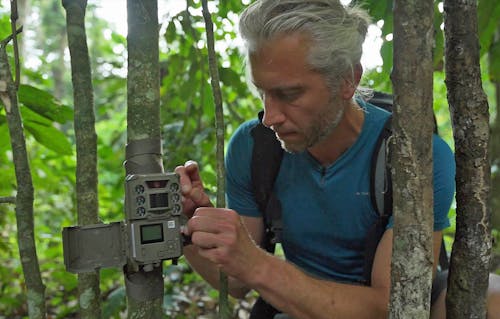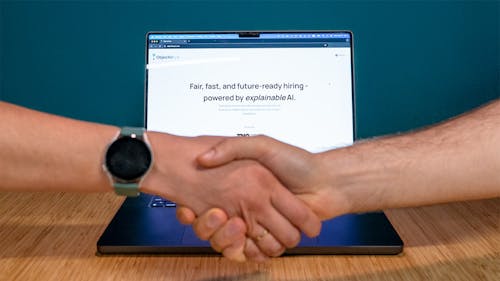ChatGPT-driven kiosk interface
Together with KLM, we developed a new AI-powered kiosk interface in one week. The standard interface of the kiosks at Schiphol was temporarily replaced by a variant based on ChatGPT, which makes the interaction with passengers more efficient and personal. We tested the prototype on site at the airport, directly after customs.
We have already applied our approach to prototyping and validating new concepts very quickly at KLM. We call that Jumpstarts. A Jumpstart is a one-week pressure cooker in which we build and test a working prototype. In short: a fast and cheap way to innovate.
New jumpstart with KLM
So in 2024, KLM came to us once more for a innovation boost. The Dutch airline wanted to find out whether an AI chat interface, such as the one we introduced on our own Q42 website in 2023, could also be used at the interactive kiosks at Schiphol.
Limitations of the kiosk interface
The kiosks offer KLM a solution when hundreds of passengers land at Schiphol at the same time and want to arrange their transfer. Many passengers use the KLM kiosks to rebook a flight, for example. However, the interface of the kiosks is quite rigid: situations often do not fit within the standard options offered by the kiosks. This can happen when two passengers miss their connecting flight, but cannot be booked together on an alternative flight when they try to do so via a kiosk.
Personal and efficient interaction
The idea was to replace the rigid UI with a more human conversational format. We wanted to achieve this by combining fuzzy input with some common presets. During the conversation, passengers are asked to scan their boarding pass so that the data can be retrieved.
What we wanted to validate
During the Jumpstart, we wanted to find out two things. First, whether passengers can be helped by the AI chat interface in such a way that they do not need further assistance - or reassurance - from KLM staff. And second, we wanted to find out whether we can make the UI so nice that typing on the large touchscreen of the kiosks works well. An additional challenge in all of this is of course that many people are stressed in such a situation and do not want to wait for an incomprehensible and inflexible UI.
Learning by experimenting
By means of an extensive prompt, we have managed to implement a much more user-friendly chat interface on the test kiosks. Passengers can ask random questions and are then helped in a personal and relevant way. We use ChatGPT for this without actually sending passenger data to Open AI (we avoid this by hashing). And thanks to access to KLM APIs, we have been able to work with real flight data. During testing, this worked so well that we were able to rebook flights in real time using the modified kiosks. A week of experimenting provided enough new insights for further steps.
"We learned that within one week you can really get more done than you think if you take on the experimentation mindset."
Leny van Eeden, product owner self-service kiosk KLM





